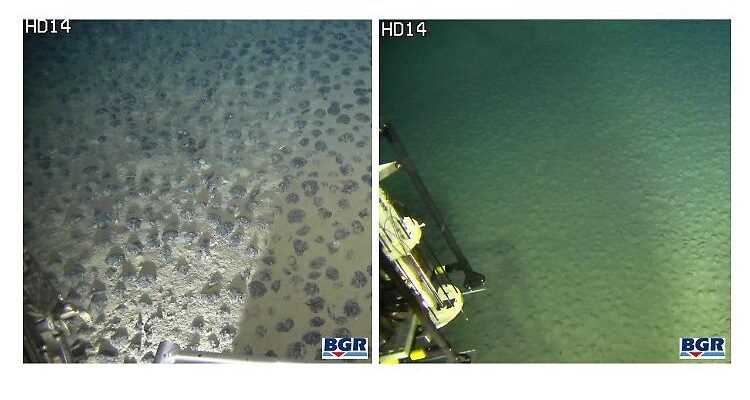Sunday May 16, 2021
Opportunity or disaster?
Germany is promoting deep-sea mining
Large parts of the deep sea are still undeveloped. That could change soon, because important raw materials are stored far below in the ocean. Germany also wants to play in the promising market and is already carrying out initial tests. Environmentalists are sounding the alarm.
It sounds like the subject of a novel by Jules Verne or Frank Schätzing: Germany is examining the sea floor kilometers below the surface of the sea in the Pacific Ocean – in preparation for possible mining in the deep sea. Because raw materials that are important for industry are stored on the seabed. Manganese nodules, for example, dark lumps that contain nickel, copper and cobalt. Substances that are urgently needed for electrical appliances and the expansion of renewable energies.
Photos of a diving robot show a layer of sediment that has been deposited on the previously clearly visible manganese nodules.
(Photo: picture alliance / dpa / BGR)
As early as 2011, the federal government identified deep-sea mining as a priority topic in the National Master Plan for Maritime Technologies. It says raw materials from the deep sea could be of growing importance for the global economy. That is tempting, because so far Germany has been almost completely dependent on imports for metal raw materials. The Ministry of Economic Affairs also sees “good market prospects” for German marine technology companies that could enable the extraction of mineral raw materials on the seabed.
Is the “ecological catastrophe” looming?
It’s still a vision for the future. But the exploration of the deep sea has long since started and this is already causing severe criticism. Environmentalists like Greenpeace are protesting against the plans. The fear: The extraction of raw materials could permanently upset and damage the ecosystem in the ocean. A few days ago, activists from the Greenpeace ship “Rainbow Warrior” therefore attached banners to the supply cable of a deep-sea robot in the Pacific with the demand “Stop deep-sea mining”. “Already today, industry is plundering and polluting our oceans as if there were no tomorrow. It must not also destroy the deep sea through mining,” says Sandra Schöttner, marine biologist from Greenpeace on board the “Rainbow Warrior”. And she warns: “If the seas die, we will also lose our livelihood. Germany must not take part in this ecological catastrophe.”
After all: The German government’s marine master plan also states that, from the German point of view, efficient and environmentally compatible processes should be aimed for in deep-sea mining. Accordingly, the Federal Environment Agency and the Federal Institute for Geosciences and Natural Resources (BGR) already advertised in 2017 at a workshop with the International Seabed Authority to regulate deep-sea mining with consistent environmental specifications, for example in the form of protected areas to preserve biodiversity. Mussels, starfish and sponges live on the sea floor.
Investigations have been going on for years
The seabed authority based in Jamaica has issued around 30 licenses to explore areas with manganese nodules, manganese crusts and massive sulphides since 2001 – two of them to Germany. On behalf of the German government, the BGR has been investigating an area with manganese nodules in the eastern Pacific since 2006 and one with sulphide deposits in the southwest Indian Ocean since 2015. Both are economically interesting: the manganese nodules because of their copper, nickel and cobalt content, the massive sulphides because of their copper, zinc and lead content, but also gold and silver.
In the German manganese nodule area, located between Hawaii and Mexico, BGR has just completed an important device test. For the first time in the world, a collector was used to break down the tubers – at a depth of around 4500 meters, where the pressure would be far too high for human divers. Together with the sediment, the device from the Belgian company Global Sea Mineral Resources sucked in the manganese nodules there, observed by two diving robots and around 40 different sensors.
The aim of the exercise was to be able to scientifically evaluate the environmental impact of the intervention and thus to set environmental standards for the dismantling in motion. Because with the so-called “Mining Code” the seabed authority is currently working out a legal framework for deep-sea mining. Researchers from 29 European institutes are now evaluating the device test data accordingly. According to the BGR, the environmental impact of the test run itself is minor, despite the turbulent sediment. Large-scale mining projects, on the other hand, could have far more far-reaching consequences for the deep sea and the living organisms that live there.
.
